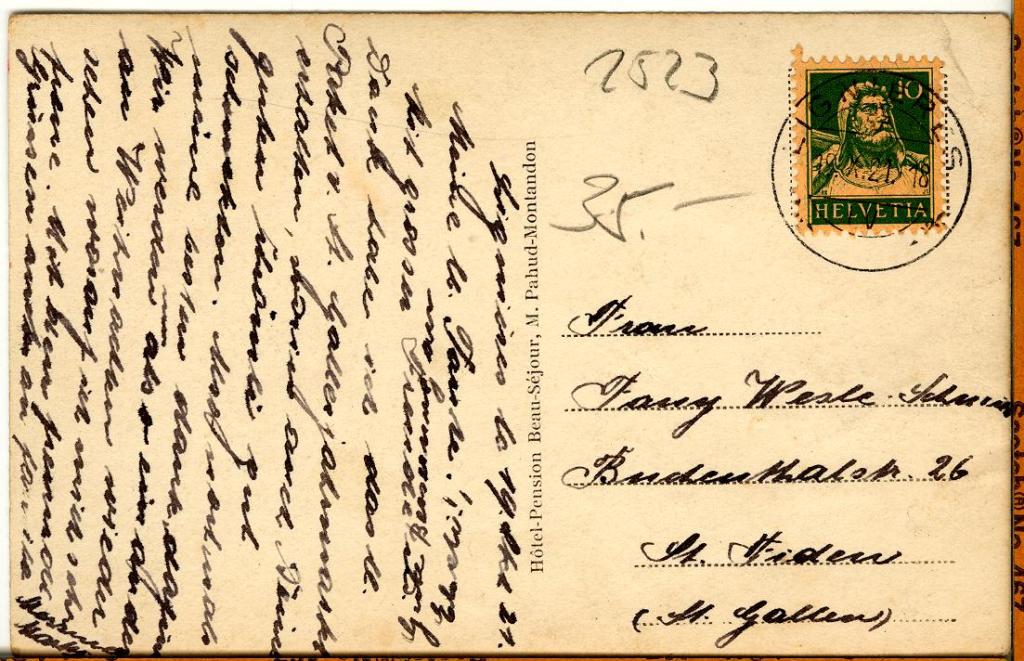

|
Lignières: Then and Now |
|
Click image for contemporary view.


The historical photograph is courtesy of M. Werner Löffel of Lignières, who kindly contributed images of his post card collection to the archives of the Fondation de l'Hôtel de Commune de Lignières.
|
by John Walker May, 2007 |
|
Now we're going to take a brief side-trip from our route along the Rue du Montilier. Returning to the stop before last and making a demi-tour, we proceed down the Chemin du Gibet to the Route Cantonale, head northeast a bit, and then turn back to look in the direction of the church.
By the time this post card was mailed in 1921, almost three centuries afterward, Lignières was a much happier and accommodating place, with neither witches nor witch hunters in evidence. (Today, the Place du Gibet is a lieu de pic-nique [Swiss-french spelling]). Here, with the Place du Gibet behind us, we look back in the direction of the Temple de Lignières (Place de l'Eglise, RACN 010-6456-00197). On either side are two more of the establishments which catered to holiday visitors at the time of the “then” picture. To the left is the Pension Bellevue (Chemin du Gibet 3, RACN 010-6456-00085), and at the right is the Grand Hôtel et Pension Beauséjour (Chemin du Gibet 1, RACN 010-6456-00084). (The caption on the post card confusingly lists them in the order opposite their relationship in the photo.)
Unlike the hotels and pensions we've seen earlier on the tour (here and here), which were conversions or expansions of existing buildings, the Bellevue and Beauséjour were built specifically as hostelries; both on the south side of the village, affording visitors the magnificent vista of the Alps visible from there. The Beauséjour was built in 1892–1893—other post cards show a drawing of the establishment from around 1898 and a view of the other side from 1903 or earlier. The Bellevue opened in 1910 as a pension for girls, complete with such new-fangled amenities as bathrooms and electricity designed in from the start.
This is one of those situations where it's impossible to reproduce the perspective of the “then” picture. Due to the construction of new buildings and growth of trees in the intervening years, the only vantage point from which the church is visible framed by the two foreground buildings is from further along the Route Cantonale towards the northeast than the location whence the original photo was taken.